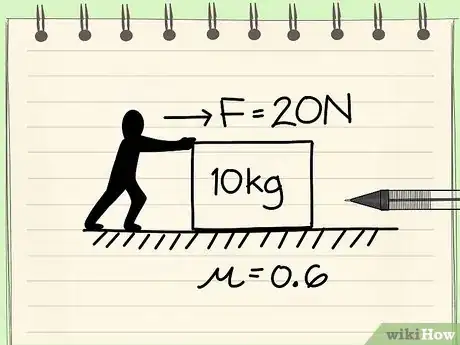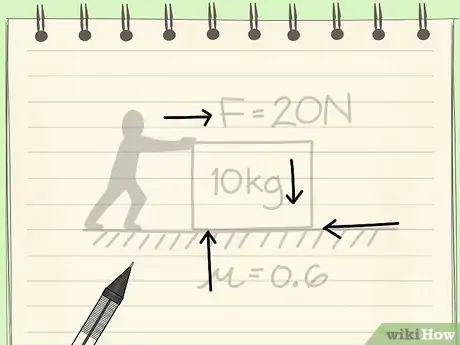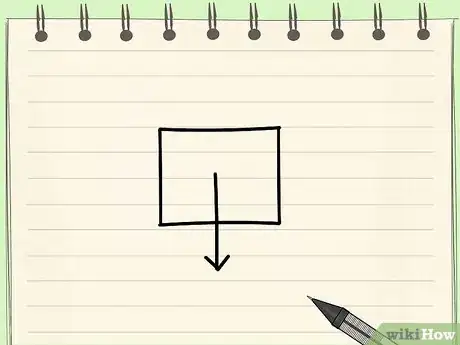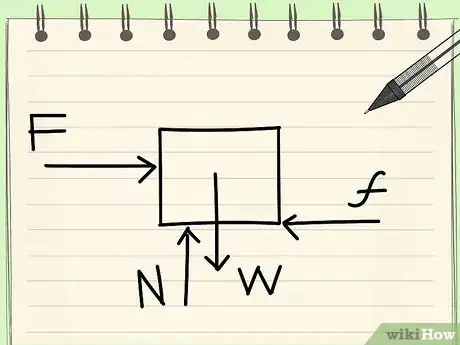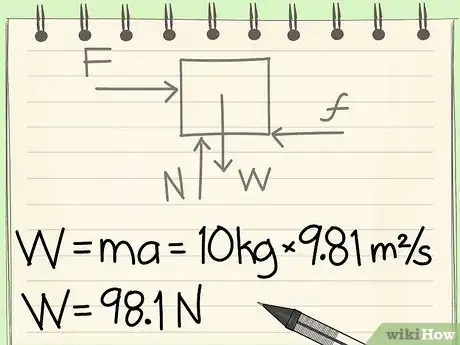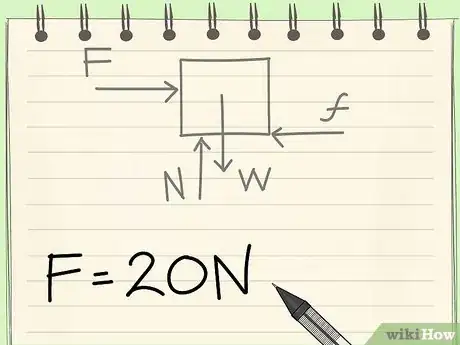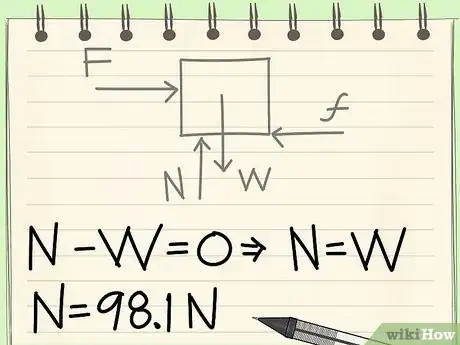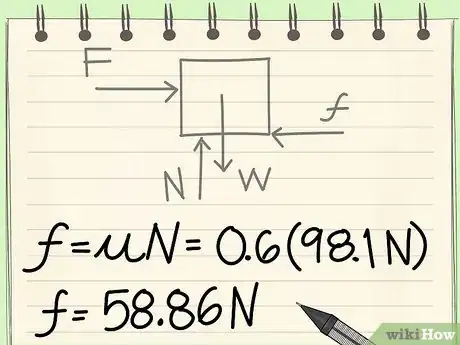wikiHow is a “wiki,” similar to Wikipedia, which means that many of our articles are co-written by multiple authors. To create this article, 13 people, some anonymous, worked to edit and improve it over time.
This article has been viewed 94,375 times.
Learn more...
A free-body diagram is a visual representation of an object and all of the external forces acting on it, so to draw one you'll have to have this information calculated. They are very important for working in engineering or physics problem solving since drawing them helps you to understand what is going on in a problem. A free-body diagram can be drawn very simply, with squares and arrows, or you can make it much more complex. The only requirement is that you or someone else looking at it should be able to understand what the diagram is telling.
A free-body diagram (FBD) is a representation of a certain object showing all of the external forces that acts on it. FBDs are very helpful in engineering and physics problem solving.
Steps
Creating a Basic FBD
-
1Identify the body/object you want to make an FBD of.
- Example: A man is pushing a 10kg box on a rough floor, with a coefficient of friction of µ = 0.6, by applying a 20N force. You will select our body to be the box.
-
2Draw a simple representation of the body.
- Example: Make a square to represent the box.
Advertisement -
3Think of which forces are acting on the body.
- Example: These are (1) the weight of the object, (2) the pushing force of the man, (3) the normal force applied by the floor, and (4) the friction force due to the rough floor.
-
4Draw the forces one by one using arrows pointing to the direction of the force. Always start with the weight because all objects have weight.
- Example: (1) For the weight, draw an arrow pointing downward because the weight is the pulling force of the earth's gravity, which is always downward.
-
5Draw the remaining forces.
- Example: (2) Draw an arrow that follows the direction of the pushing force. (3) Draw an arrow pointing upward for the normal force because it should always be perpendicular to the floor. (4) Draw an arrow that is opposite the direction of motion of the box for the friction.
-
6Label your forces properly and your basic FBD is done! However, if you wish to put the magnitude of the forces, you may continue to the following steps.
Adding the Magnitude of the Forces
-
1Add information about the weight. The weight of the object is equal to mass of object*acceleration due to gravity.
- Example: W = m*a. W = (10kg)*(9.81m/s^2) = 98.1N. Write this beside its respective arrow.
- Note: Forces are measured in Newtons or N.
-
2Add the push forces. The magnitude of the pushing force applied by the man is given as 20N. Write this beside its respective arrow.
-
3Add the normal force. The normal force is equal to the magnitude of the weight that acts perpendicularly to the floor. In this case, all of the weight is acting perpendicularly to the floor, therefore, N and W are equal in magnitude. So, N = 98.1N. Write this beside its respective arrow.
-
4Add the friction force. The friction force is given by the formula: f=µ*N. Therefore, f = 0.6*(98.1N) = 58.86N. Write this beside its respective arrow.
- Now that all forces are represented with their direction and magnitude, your FBD is ready for further engineering or physics analysis!
Community Q&A
-
QuestionA man applies a force of 450 N to push a crate with a mass of 900 kg over a horizontal floor. How can this be calculated?
 Community AnswerF = ma; m = 900 kg, a = x m/sec. A = f/m; a = 450/900 =0.5 m/sec. Hence, the acceleration is 0.5 m/s.
Community AnswerF = ma; m = 900 kg, a = x m/sec. A = f/m; a = 450/900 =0.5 m/sec. Hence, the acceleration is 0.5 m/s. -
QuestionHow do I find acceleration and action reaction force?
 Community AnswerSince the Free Body Diagram shows the forces, if you know the mass you can use the equation F=ma. F is the force, M is the mass and A is the acceleration. The action reaction forces are equal to each other and are in opposite directions.
Community AnswerSince the Free Body Diagram shows the forces, if you know the mass you can use the equation F=ma. F is the force, M is the mass and A is the acceleration. The action reaction forces are equal to each other and are in opposite directions. -
QuestionWhat are the best equations to solve a free body diagram?
 Community AnswerDepending on the type of free body diagram, there will be a lot of different equations used. Newton's second law, Hooke's law, and static friction formulas are all useful.
Community AnswerDepending on the type of free body diagram, there will be a lot of different equations used. Newton's second law, Hooke's law, and static friction formulas are all useful.
About This Article
To draw a free body diagram, start by sketching a simple representation of the body you want to make the diagram of, like a square to represent a box. Next, draw arrows on the shape that show the forces acting on the object. For example, draw a downward arrow to signify the weight of the object, since gravity pulls the object down. Then, draw lines for the other forces, such as a sideways arrow to indicate a pushing force. Finally, label each arrow with the force it represents and the magnitude of that force. To learn how to convert an object’s weight into Newtons of force, read on!
